6 Best Lower Glute Exercises (with Pictures!)
Although any anatomy textbook will tell you that there is technically no “lower” muscle group within the glutes, it is indeed possible to target the bottom section of the buttocks with a few specific exercises.
These exercises primarily target the gluteus maximus in a manner that emphasizes the inferior section of the muscle, where the muscle group itself meets the hamstrings and forms a crease.
Examples of lower glute exercises - all with varying degrees of difficulty, equipment requirements and accessibility - include hip thrusts, glute ridges, reverse lunges, back leg lifts, bridge pulses, and cable pull throughs.
What are the Lower Glute Muscles - and How do We Exercise Them?
The glutes are made up of three primary muscle groups - those being the gluteus minimus, medius and maximus. For the purposes of targeting the “lower” glutes, we will need to perform exercises that work the gluteus maximus.
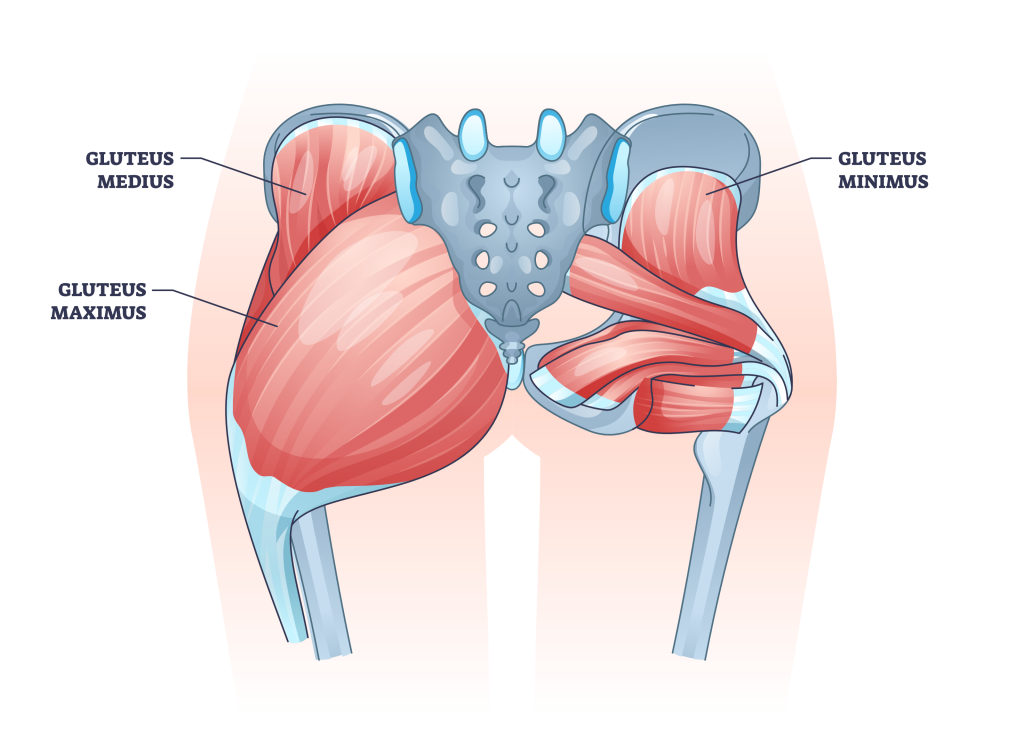
The gluteus maximus is the largest and most superficial muscle found in the buttocks, and is generally recruited as a single unit whenever the glutes are engaged.
Fortunately for us, EMG data has shown that there is indeed an “upper” and “lower” section of the gluteus maximus, of which are the superior and inferior sections respectively.
Although both sections will most likely be recruited at the same time, it is still possible to elicit a greater response from one half than the other - especially with the correct exercise.
What Kind of Movements Work the Lower or Inferior Gluteus Maximus?
Because the same EMG data shows that the superior section is more responsive to movements involving hip abduction and external rotation, we will want to avoid exercises that focus on such mechanics.
Instead, selecting exercises that feature more hip extension will be your best bet.
A few good examples of this are the glute bridge and hip thrust - both of which feature hip extension as their primary movement, and are convenient enough to be performed entirely at home.
Best Lower Glute Exercises
1. Hip Thrusts
The first exercise to consider when training the lower glutes is the ever-popular hip thrust.
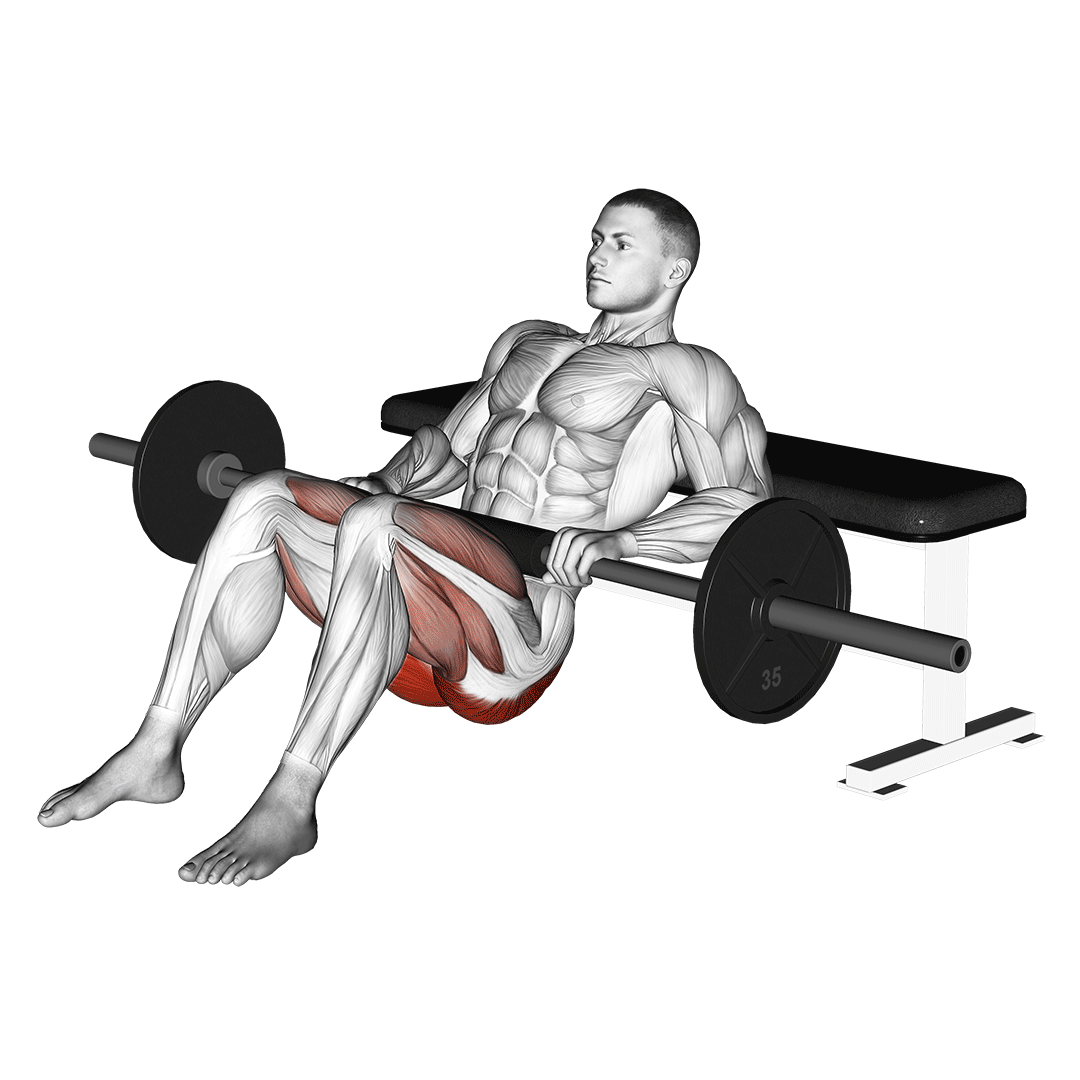
As the name implies, hip thrusts involve the lifter being in a half-lying position as they extend their hips forwards.
Like most exercises used to work the glutes, the hip thrust will also target the hamstrings as well. It is classified as a multi-joint closed chain exercise, and can be performed with anything from simple bodyweight resistance to a loaded barbell.
Equipment Needed
Hip thrusts may be performed with any sort of weighted equipment, or with no weight at all. An exercise bench, couch or similarly low object will also be needed to prop up the torso.
Benefits as a Glute Exercise
Hip thrusts are particularly beneficial for working the entirety of the glutes while maintaining an emphasis on the inferior gluteus maximus. This is essential for proper glute muscle function, and carries over quite well to other activities involving the posterior chain.
Furthermore, hip thrusts can be performed with little to no risk of injury, and are quite forgiving as far as joint impact is concerned.
How-to:
To prepare for a set of hip thrusts, the lifter will lie with their upper back supported by an exercise bench and their legs bent in front of them.
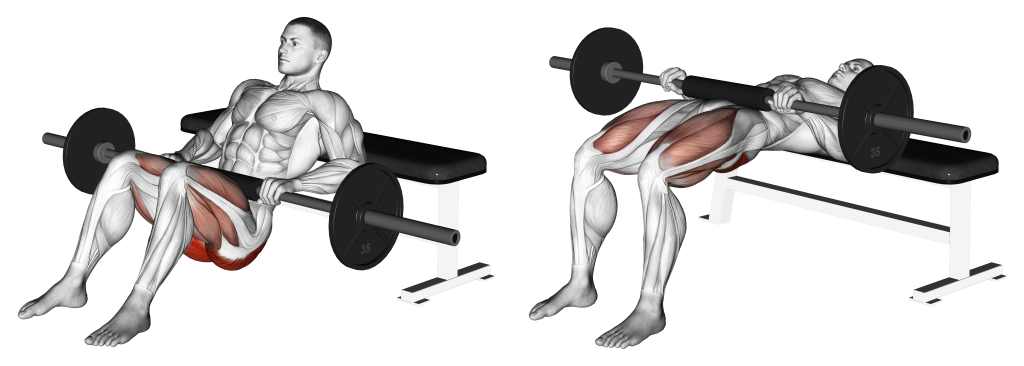
If performing the exercise with weights, the equipment should be placed atop the pelvis in a balanced position.
Beginning the repetition, the lifter will squeeze their glutes and extend their hips forwards - ensuring that the force is being derived from their posterior chain. This action should be performed slowly, emphasizing time under tension.
Once the pelvis is parallel with the torso and the body forms a flat plane, the lifter will simply lower their pelvis once again - thereby completing the repetition.
2. Glute Bridges
Similar in mechanics to hip thrusts - the glute bridge is another excellent tool for building definition and size in the lower glutes. Being a closed chain compound movement accessible to even complete novices, its popularity is paralleled only by its safety.

Because the glute bridge also mainly features hip extension, the inferior gluteus maximus is emphasized to a greater extent. In addition, the hamstrings, quadriceps, lower back and core are also utilized to a lesser extent.
Glute bridges are typically performed on the ground in a lying position, and will only seldom make use of heavy weighted equipment.
Equipment Needed
Glute bridges require no equipment to perform, but individuals may use a barbell or weight plate atop their hips to add further resistance.
Benefits as a Glute Exercise
The main benefit to doing glute bridges is its accessibility and low barrier of entry. This, combined with its high capacity for volume make it perfect for novices, individuals without access to a gym or lifters who wish to reduce the strain placed on their joints.
How-to:
To perform a glute bridge, the lifter will lie on a comfortable surface with their knees drawn upwards.

Ensuring that the core is contracted and the upper back flat against the floor, the lifter will then squeeze their glutes and push their hips upwards - forming a declining line from the top of their knees to their head.
They will hold this position for several counts before lowering their hips back to the ground, where the repetition is then considered to be complete.
3. Deficit Reverse Lunges
Although most are familiar with the classic lunge exercise, greater emphasis on the lower section of the glutes can be achieved by elevating the position of the feet and performing the exercise in reverse.
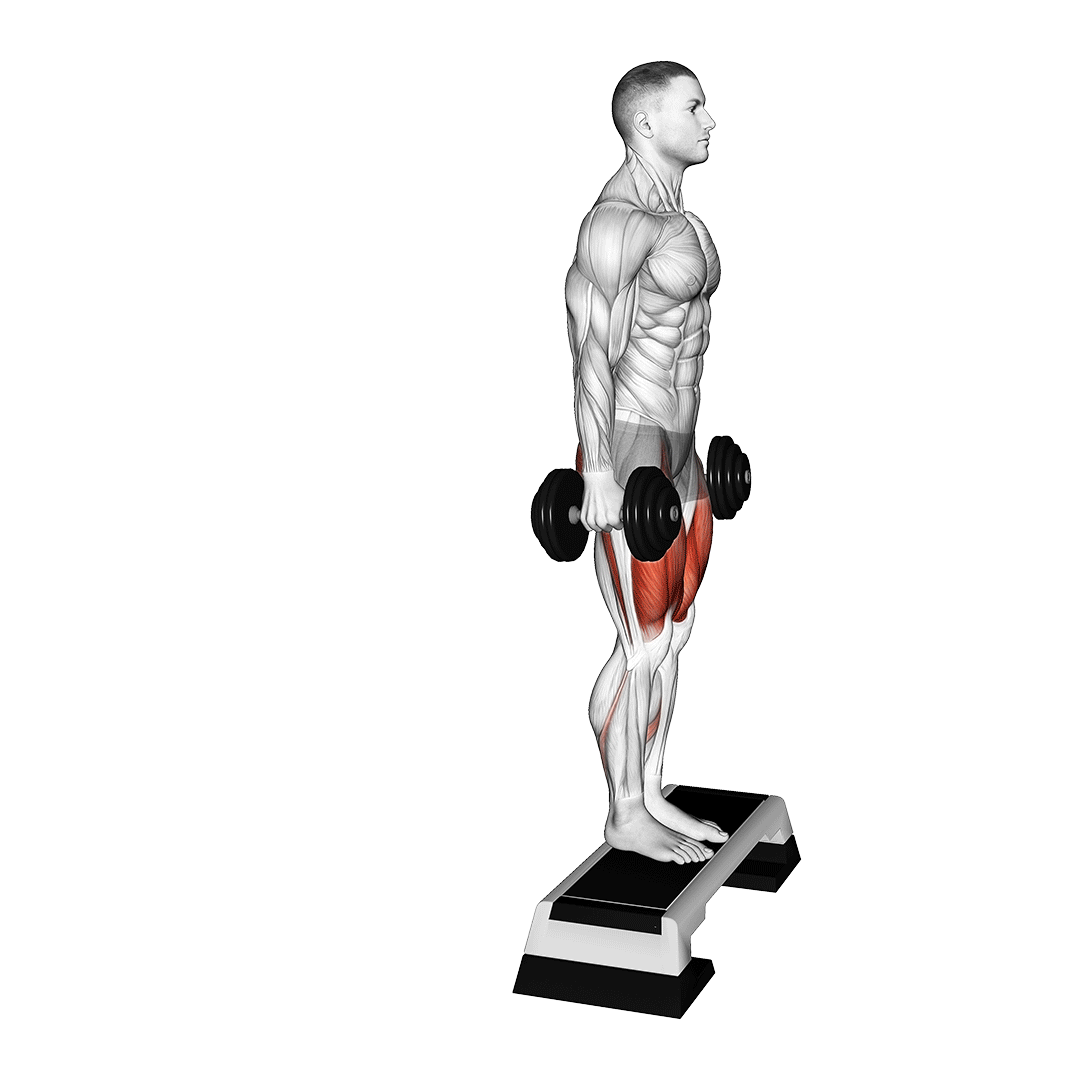
Deficit reverse lunges, like its more traditional counterpart, is a closed chain compound exercise that can be performed either weighted or entirely as a calisthenics movement.
Equipment Needed
Deficit reverse lunges primarily need an elevated platform several inches to stand on. For more experienced lifters, the usage of dumbbells or kettlebells can help keep the flow of progression as well.
Benefits as a Glute Exercise
Deficit reverse lunges are particularly useful for training the glutes in a dynamic and functional manner.
Although it's unlikely you’ll be replicating the same movement pattern in real life, they are nonetheless dynamic enough to build not only strength and size, but also athletic skills as well.
In addition, like glute bridges, the deficit reverse lunge is simple and low-impact enough to be performed entirely at home.
How-to:
To perform a deficit reverse lunge, the lifter will stand atop a platform that is less than half a foot in height, feet set a comfortable distance apart.
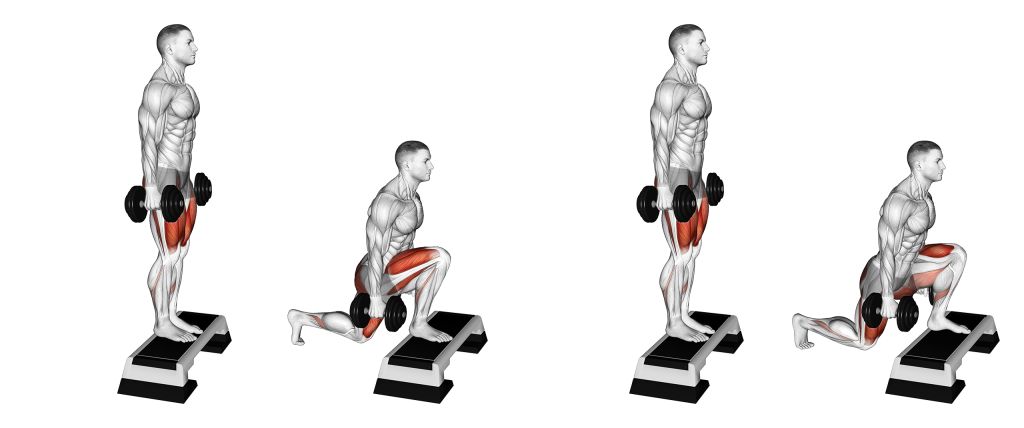
Contracting the core and ensuring they are well-balanced, the lifter will then take an exaggerated step backwards, lowering one knee behind the platform and landing on their forefoot behind them.
The lifter will follow this movement until their back knee is nearly touching the ground, squeezing their glutes as they do so.
Once reaching proper depth, the lifter will then simply raise their foot back up to the platform to complete the repetition.
Remember to repeat the same movement with the opposite leg as well.
4. Back Leg Lifts
Also referred to as “quadruped” lifts, back leg raises or glute leg lifts, the back leg lift is a novice level calisthenics exercise with a particular emphasis on the lower section of the gluteus maximus.
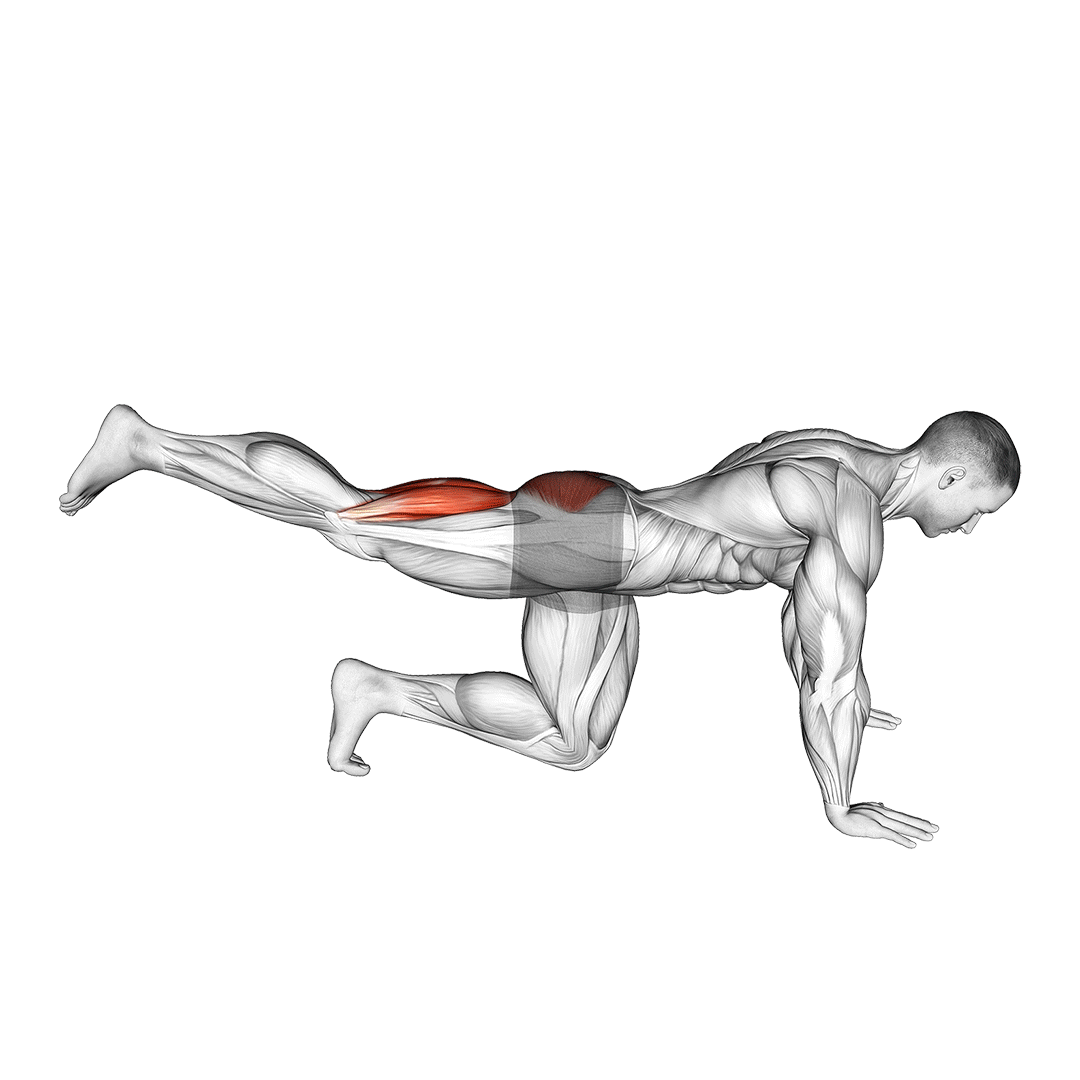
In technical inspection, the leg lift is a multi-joint posterior chain exercise primarily performed by novices or as part of a training circuit.
Apart from the glutes, back leg lifts also target the core and hamstrings.
Equipment Needed
Back leg lifts require no equipment whatsoever, but may be made more difficult with wearable ankle weights.
Benefits as a Glute Exercise
Leg lifts are as low-impact and accessible as they come, making them the perfect exercise for a low-intensity workout, novices or individuals without the requisite mobility for other glute exercises.
In addition, the back leg lift is the perfect exercise for including into a calisthenics circuit. It is similar enough in stance with the plank, push-up or burpee to be performed without any energy or time wasted switching between stances.
How-to:
To perform a repetition of the back leg lift, the lifter will lie on all fours with their core contracted and lower back flat. The knees should be set a sufficient distance apart to maintain balance.
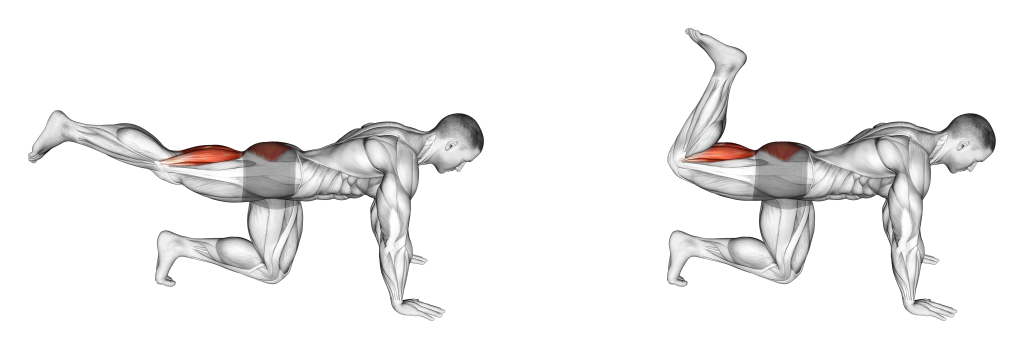
Now in the appropriate stance, the lifter will squeeze their glutes and hamstrings as they extend one leg backwards. As the leg straightens, the lifter will further contract their posterior chain, raising the leg off the floor as if pointing with their toes behind them.
The lifter will then hold this position for several counts before lowering the leg back to the ground - thereby completing the repetition.
Remember to also perform this motion with the opposite leg as well.
5. Bridge Pulses
An oft-overlooked glute exercise mechanically similar to glute bridges - the bridge pulse takes the core mechanics of the standard glute bridge and brings it to a higher level of intensity.
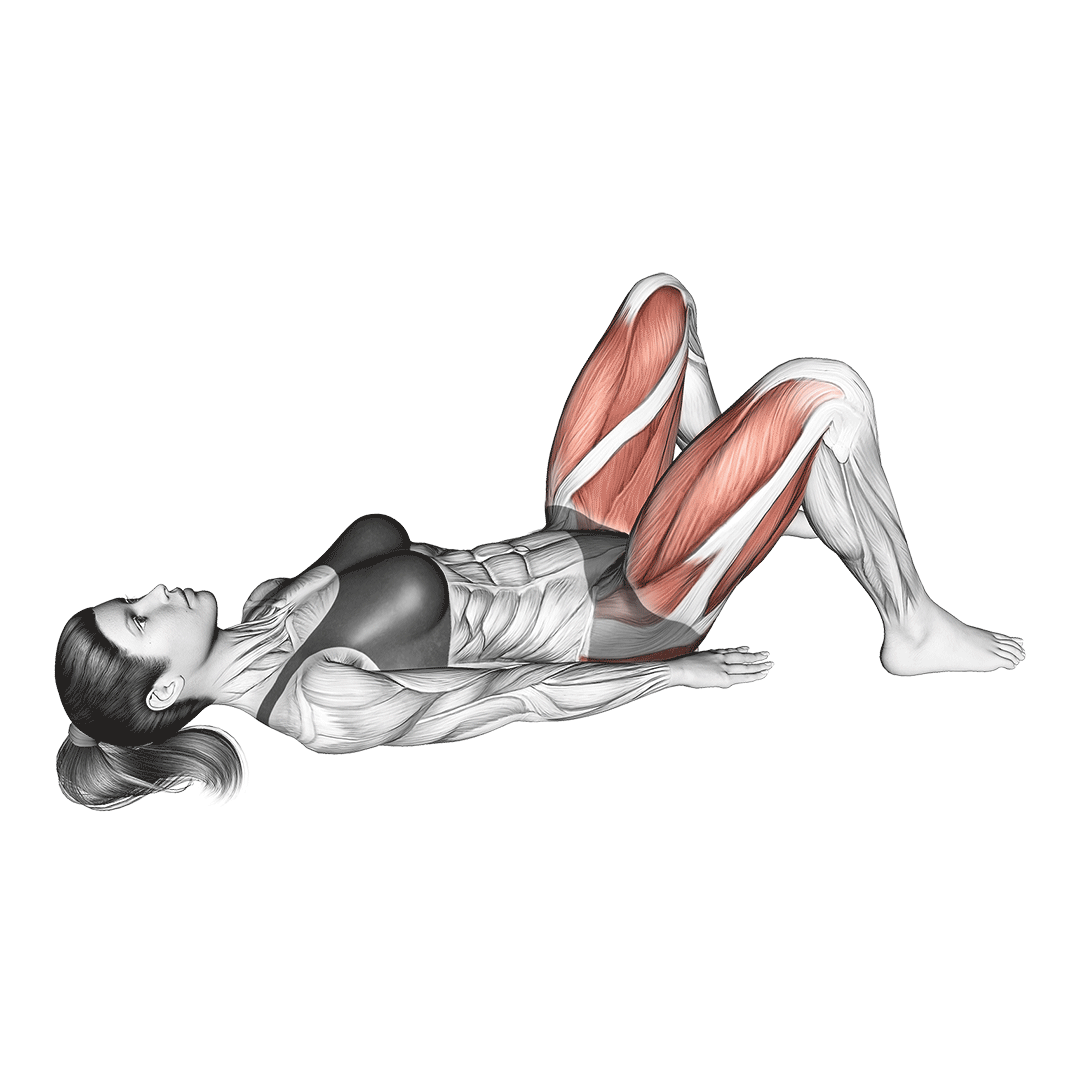
Bridge pulses are a traditionally calisthenic compound exercise most often performed for rapidly building strength and mass in the posterior chain. Alongside the lower glutes, they will also work the hamstrings and core.
Equipment Needed
Bridge pulses require no equipment whatsoever - but may be made more intense by placing a weighted object atop the hips.
Benefits as a Glute Exercise
In actuality, bridge pulses are simply standard glute bridges with a shorter range of motion and greater capacity for volume. Unlike the standard glute bridge, bridge pulses do not allow the lifter to return their hips to the floor with each repetition, and are instead performed in a raised position throughout the entire set.
This builds not only strength and mass in the posterior chain, but also isometric endurance as a constant time under tension is used.
Furthermore, individuals that find glute bridges to be boring or too time-consuming can get much the same benefits from the bridge pulse with half the time spent.
How-to:
To perform bridge pulses, the lifter will need to lie atop their back on the floor, knees drawn up and heels planted.

Raising the pelvis and contracting the core, the lifter will extend their pelvis upwards until in the standard bridge position. Much of the force derived in this movement must come from the glutes - of which will be squeezed throughout the set.
Once the hips have been thrusted upwards, the lifter will relax the glutes somewhat and lower the pelvis by several inches, thereby completing the current repetition.
Where the bridge pulse differs from other similar exercises is that the lifter will not lower their hips back to the floor at the end of the repetition. Instead, they will continue keeping tension in their glutes and lower back, simply thrusting the hips through a short range of motion throughout the set.
6. Cable Pull-Throughs
For a machine-based lower glute exercise, few can compare to the effectiveness of the cable pull-through.
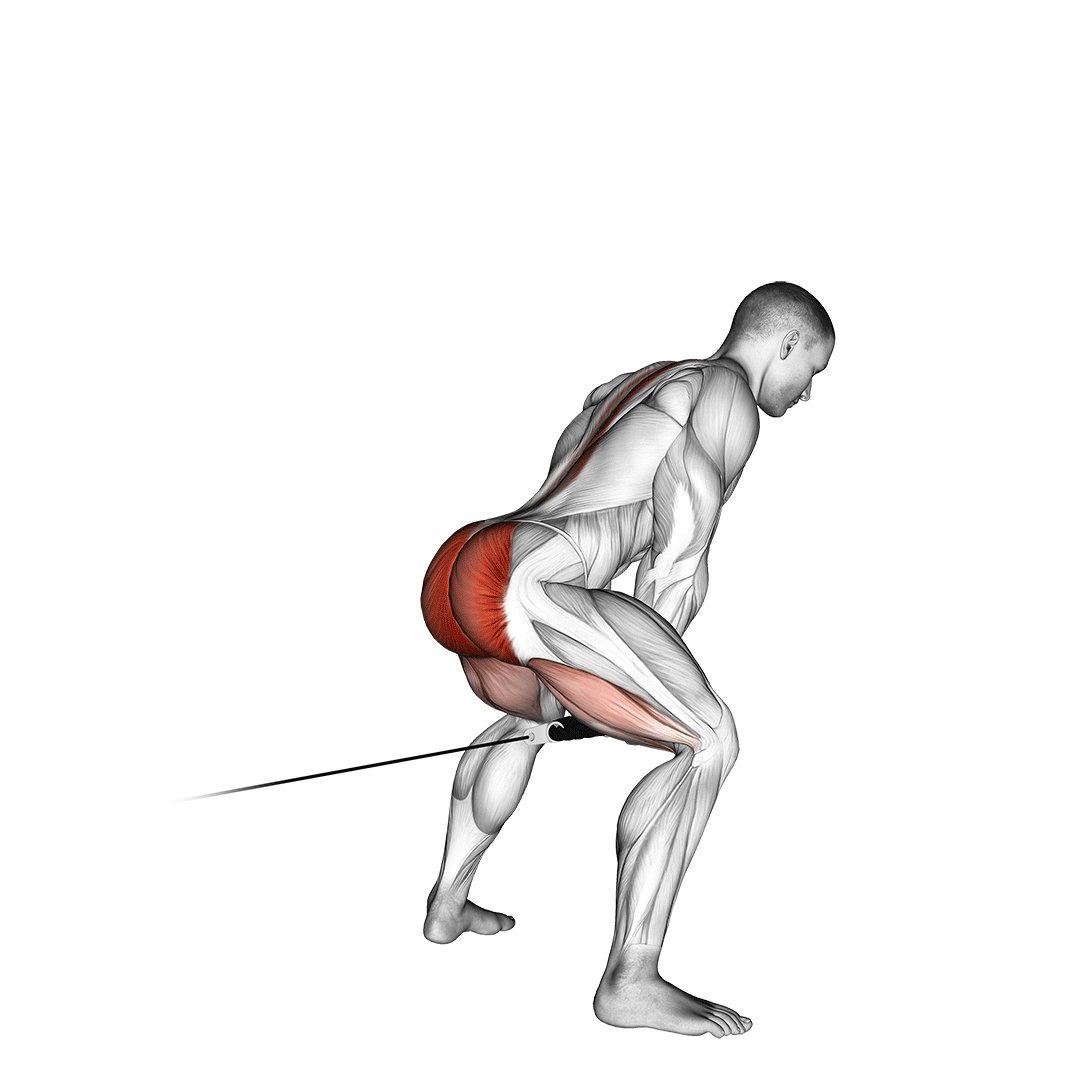
Cable pull-throughs are a compound hinge exercise most often used to reinforce the posterior chain in a moderately intense fashion. Alongside the glutes, they will also target the erector spinae and hamstrings - making them perfect for posterior chain workout sessions.
Equipment Needed
Cable pull-throughs will require an adjustable cable machine and a double-ended rope attachment.
Benefits as a Glute Exercise
The cable pull-through is self-stabilizing on account of using a cable machine. This allows for a greater amount of volume and resistance to be used with each set.
In addition, when performed correctly, cable pull-throughs are quite safe and are one of the few hinge exercises that feature a very low risk of injury.
How-to:
Setting the cable pulley close to the ground, the lifter will stand facing away from the machine as they spread their legs sufficiently far apart to fit the ropes through.
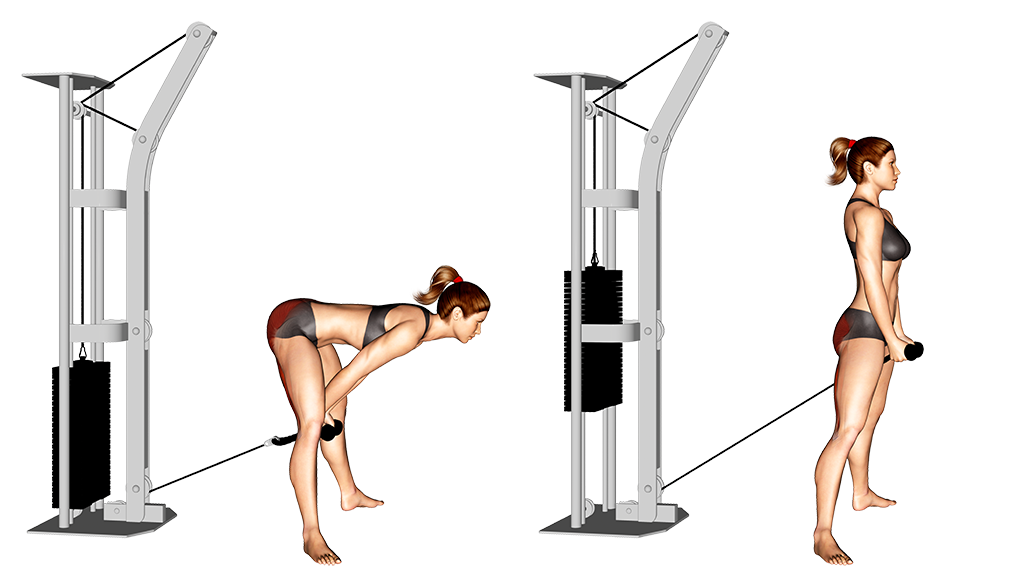
Hinging at the hips and bending forwards, the lifter will reach down and grip the double-ended rope attachment, ensuring they are standing far enough away to maintain tension in the cable.
Rope now in hand, the lifter will contract their core, ensure their lower back is flat and squeeze their glutes. This should push their pelvis forwards, drawing them out of the bent-over hinge position and into an upright one.
Once in the upright position, the repetition is considered to be complete.
Frequently Asked Questions (FAQ)
How Do You Isolate Your Lower Glutes?
It isn’t quite possible to isolate the lower section of the glutes, but it is indeed possible to emphasize them more than the upper section. This is done through movements involving hip extension, such as glute bridges or cable pull-throughs.
What are Your Lower Glutes Called?
The “lower” section of the glutes is the gluteus maximus - in particular, the inferior gluteus maximus, with the upper section of the same muscle being called the superior gluteus maximus.
Are Glutes Mostly Fat or Muscle?
Whether your glutes are muscle or fat will depend on your specific body composition and gender.
Men or individuals who regularly train the glutes are more likely to have a greater lean mass to fat ratio in the glutes, whereas women or untrained individuals have a higher fat deposition in the area.
Keep in mind, if your goal is to reduce fat in your glutes, spot fat reduction is impossible.
In Conclusion
Although there is no truly isolating the lower glutes, this doesn’t mean you can’t build the posterior you want. Regularly training the gluteus maximus muscle will bring about the much-coveted lower butt crease, and will also greatly strengthen your posterior chain as well.
Remember to perform each exercise according to its proper form, and to seek out the advice of a professional coach if you are unsure of something.
References
1. Neto WK, Soares EG, Vieira TL, Aguiar R, Chola TA, Sampaio VL, Gama EF. Gluteus Maximus Activation during Common Strength and Hypertrophy Exercises: A Systematic Review. J Sports Sci Med. 2020 Feb 24;19(1):195-203. PMID: 32132843; PMCID: PMC7039033.
2. Selkowitz, David M et al. “Comparison of Electromyographic Activity of the Superior and Inferior Portions of the Gluteus Maximus Muscle During Common Therapeutic Exercises.” The Journal of orthopaedic and sports physical therapy vol. 46,9 (2016): 794-9. doi:10.2519/jospt.2016.6493
